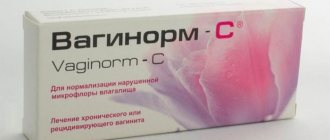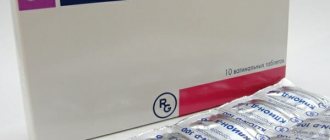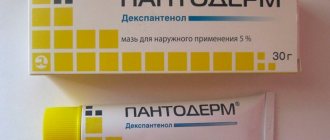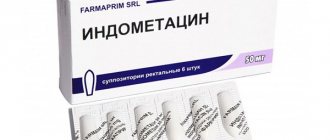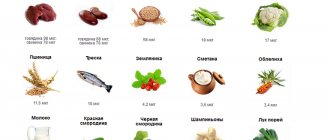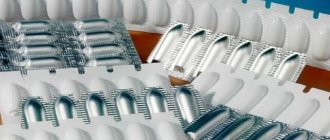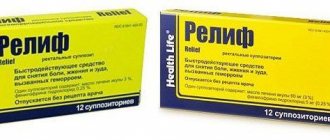Suppositories with antibiotics are highly effective in the complex treatment of diseases of the genitourinary system. Due to the predominantly combined composition, suppositories can have not only local antibacterial, but also analgesic, anti-inflammatory and antiseptic effects.
Antibiotic suppositories can be used for vaginitis, vulvovaginitis, cervicitis, prevention of septic complications before hysterography, cervical cauterization, before and after abortion, etc. For men, rectal suppositories with antibiotics are prescribed for the complex treatment of bacterial prostatitis. Topical medications cannot replace systemic antibacterial therapy, but they can significantly speed up the healing process and alleviate the patient’s condition. Some suppositories for prostatitis with antibiotics additionally contain components that help normalize microcirculation in the prostate gland, reduce swelling and eliminate congestion.
Indications for use
Vaginal suppositories are prescribed both as part of a drug treatment regimen and when prescribing a surgical intervention, before and after it. They are prescribed to treat many gynecological pathologies of an inflammatory nature, including:
- extensive cervicitis affecting the entire cervix;
- inflammation of the cervical canal;
- pseudo-erosion complicated by various infections;
- before and after surgical treatment of inflammatory processes in the cervix;
- as a sanitizing agent before surgery.
Suppositories in gynecology
Vaginal suppositories with sea buckthorn are effective in the treatment of gynecological pathologies. Their use gives positive results in the postoperative period and in diseases of the female organs. The course of treatment helps in the case of:
- cervical erosion;
- herpes;
- painful symptoms accompanying thrush;
- inflammation of the genitourinary system.
Suppositories with sea buckthorn oil in gynecology promote the healing of scars after operations. Suppositories are recommended for use:
- to eliminate pathogenic microflora during infections;
- after cauterization erosion;
- in order to neutralize the negative effects of antibiotics;
- for the treatment of sexually transmitted pathologies;
- after childbirth to speed up the healing of ruptures;
- for the treatment of rectal diseases in pregnant women.
Benefits of suppositories
Anti-inflammatory suppositories are prescribed quite often in gynecology, since almost all women's diseases are accompanied by the development of an inflammatory process.
The advantage of using drugs in the form of suppositories is as follows:
- the effect of using the medicine in suppositories occurs very quickly;
- the active substance is delivered directly to the affected area;
- the components of the suppositories are minimally absorbed into the blood;
- they can be used by pregnant women;
- do not affect the digestive system;
- allow for a comprehensive approach to treatment.
Candles for colds in women's style and their names
The expression “cold” is not entirely applicable to inflammatory diseases of the genital organs. The cause of the inflammatory process is not always a cold, that is, hypothermia. The inflammation is usually caused by a bacterial or fungal infection.
Suppositories used in gynecology often contain components such as indomethacin, ketoprofen and diclofenac. They fall under the category of NSAIDs. These drugs often have an advantage over steroid drugs, since the latter, being hormonal drugs, can change the hormonal background of the female body. Suppositories with NSAIDs have three effects at once - reducing pain, inflammation and fever.
Suppositories used in gynecology often contain components such as indomethacin, ketoprofen and diclofenac.
Positive effects of candles
Treatment with suppositories is most often auxiliary against the background of more powerful therapy to restore normal vaginal microflora. With their help, you can quickly eliminate the uncomfortable symptoms of cervical inflammation and achieve the following results:
- inflammation is relieved;
- the activity of the infectious agent that provoked the inflammatory process decreases;
- the affected epithelial layer is removed;
- the release of vaginal secretions is normalized;
- pain syndrome is relieved;
- regeneration processes are activated.
Suppositories have a preventive effect, preventing the penetration of infectious agents into the mucous membrane.
Betadine
Vaginal suppositories, the main component of which is povidone-iodine. This component destroys protozoa, staphylococci, E. coli and Candida fungi. Betadine does not affect only Koch's bacillus.
Since Betadine contains iodine, it is contraindicated for thyroid pathologies. Other contraindications are childhood, use of radioactive iodine preparations, dermatitis herpetiformis. The course of treatment is 7 days. Every day, one suppository is used, which must be inserted at night. During menstruation, the course of treatment can not be interrupted. The drug can be used during pregnancy and lactation.
Species and representatives
Suppositories for cervical inflammation often have a potent effect, so their prescription should be done exclusively by a specialist who takes into account not only the severity of the pathology and the type of infectious agent, but also the general condition of the patient.
Let's consider the main pharmacological groups of drugs in the form of suppositories that can be prescribed for cervicitis, and also list the names of their main representatives.
Antifungal
Often, against the background of bacterial or viral cervicitis, a conditionally pathogenic microflora begins to grow in a woman’s vagina, as evidenced by the results of PCR scraping.
Symptoms of candidiasis may be completely absent, but even in this case, the doctor may prescribe antifungal drugs based on miconazole, econazole, iconazole, ciclopirox, sertaconazole and clotrimazole. These include:
- Ginesol;
- Dafnedjin;
- Irunin;
- Candide;
- Kadizol;
- Lomencin;
- Livarol;
- Zalain;
- Gyno-digester;
- Ecofucin;
- Primafungin;
- Pimafucin.
In some cases, drugs are prescribed for prophylactic purposes against the background of antibiotic therapy to prevent the development of thrush. Suppositories should be used for at least a week.
Antiviral
If the inflammation is of a viral nature, it is mandatory to prescribe medications that will enhance the woman’s immunity and thereby help destroy viral pathogens. Representatives are Acyclovir and Viferon suppositories; they must be used for at least 2 weeks in a row. The drugs are prescribed when genital herpes and HPV are detected as part of complex therapy.
Hormonal
If the inflammatory process becomes chronic, the cervical mucosa may become thinner and completely atrophy. Hormonal suppositories based on estrogen help to cope with the problem. They promote rapid healing of the mucous membrane of the uterine cervix and restoration of hormonal levels. Hormonal drugs Estriol and Ovestin are used.
Suppositories containing estradiol restore the pH level in the vagina and strengthen the natural barrier, which reduces the risk of recurrence of the inflammatory process.
Hormonal suppositories need to be used for a long period, since their main component has a short-term effect and is not able to accumulate in epithelial cells, which helps prevent hyperplastic processes, especially during the elimination of inflammation in menopausal women.
Antibacterial
If cervicitis is caused by pathogenic microbes, then based on the results of bacterial culture and determination of sensitivity to antibiotics, the following may be prescribed:
- Terzhinan;
- Hexicon;
- Betadine;
- Metronadazole, etc.
The duration of treatment will depend on the severity of the pathology and ranges from 7 to 14 weeks.
Painkillers
The main drug that is prescribed for cervicitis to relieve pain is Terzhinan; it not only has an analgesic effect, but also relieves inflammation. You cannot prescribe the remedy yourself; you may worsen your condition.
Healing
To complete the treatment of cervicitis or speed up the process of tissue restoration after surgery, the gynecologist may prescribe healing suppositories based on herbal or synthetic components. Most often, drugs based on panthenol are prescribed. This is a regenerating and anti-inflammatory component, which is a B vitamin. Depantol suppositories are a representative, they are active even with bloody-purulent discharge.
Sea buckthorn suppositories have a natural healing effect. These berries contain a large supply of carotenoids, which promote active tissue healing and relieve inflammation. Sea buckthorn suppositories are taken in courses of 8-12 pieces.
Restoring microflora
In order to prevent the re-growth of pathogenic microflora and the activation of viruses, the course of treatment for cervicitis must necessarily contain drugs that normalize the vaginal microflora. To ensure that there is a sufficient amount of bifidobacteria and lactobacilli in the vagina, forming a natural barrier between the external environment and the genital tract for invading infectious agents, the following drugs are prescribed when treating cervicitis:
- Acylact;
- Biphilis;
- Bifidumbacterin;
- Vaginorm;
- Lactobacterin;
- Lactonorm;
- Lactozhinal;
- Ecofemin;
- Femidex;
- Lactriol.
On average, it may take about two weeks to normalize the state of the vaginal microflora.
Immunomodulatory
The drugs suppress viral replication and increase local immunity. They are often prescribed for genital herpes and HPV. Unfortunately, it is difficult to treat such a pathology, since such viruses are able to integrate into the genome of human cells, but with the help of suppositories these pathogens can be suppressed and sent into a kind of hibernation. Viral cervicitis is typical for women with weakened immunity, chronic gynecological problems and vaginal dysbiosis.
Since HPV is dangerous and can provoke the development of cancer, when a viral form of cervicitis is detected, drugs are prescribed that correct the process of changing and regulating the components of immunity and activating immunocompetent cells. To achieve these goals, suppositories are prescribed:
- Genferon;
- Ruferon;
- Laferobion;
- Cycloferon;
- Kipferon;
- Viferon.
These are immunomodulatory drugs, as for immunostimulating suppositories, their prominent representative is Polyoxidonium, which is used for 10-20 days, and then the course of administration is repeated after another 3-4 months.
The drugs can be used rectally and vaginally.
Combined
To achieve a quick effect in the treatment of inflammation, combination drugs are often prescribed, which simultaneously eliminate the inflammatory process, inhibit the growth of pathogens, promote tissue regeneration and normalize the level of microflora. The main active ingredients of the drugs:
- Polymyxin, Neomycin is a broad-spectrum antibacterial agent that shows good results in the fight against the vast majority of microbes, disinfects and contributes not only to the suppression of pathogenic microflora, but to its complete elimination;
- Ornidazole, Teridazole. The components fight fungi and protozoa; they are prescribed for inflammatory processes provoked by gardnerella and trichomonas;
- Prednisolone. The component shows good results in the treatment of chronic cervicitis;
- Nystatin is a drug that prevents the proliferation of fungus from the genus Candida;
- Chlorhexidine is an antimicrobial agent that quickly destroys almost all groups of pathogenic organisms.
The concentration of components in combination drugs may vary; they are included in the following drugs:
- Terzhinan;
- Amintax;
- Polygynax;
- Hexicon;
- Depantol.
The course of therapy can last from 6 to 9 days, and the number of doses can be either 1 suppository per day or 2, it all depends on the severity of the pathology.
Most often, combined drugs are prescribed to treat inflammation against the background of erosion, but only in its early stages, when the likelihood of developing oncology is excluded.
Polygynax
Polygynax is a combination drug that has antimycotic and bactericidal effects. The drug contains nystatin (an antifungal agent), the antibiotics neomycin and polymyxin B. The drug is active against:
- Staphylococcus aureus;
- protea;
- Klebsiella;
- coli;
- Pseudomonas aeruginosa;
- Koch's sticks;
- ureaplasma;
- Candida fungi.
The drug does not work only on streptococci and anaerobic bacteria. The drug should not be used in the first trimester of pregnancy. Duration of treatment – 12 days. During menstruation, the course of treatment can not be interrupted.
Contraindications
If kidney or liver function is impaired, the antifungal drug should be used with caution. A combined drug with antifungal properties is widely used for various mycotic pathologies, in particular for thrush
"Gynocaps" is usually well tolerated and side symptoms occur if it is used for the following conditions:
A combined drug with antifungal properties is widely used for various mycotic pathologies, in particular for thrush. "Gynocaps" is usually well tolerated and side symptoms occur if it is used for the following conditions:
- impaired functioning of the kidneys and liver;
- intolerance to nitroimidazole derivatives;
- organic lesions of the central nervous system;
- hypersensitivity to the components of the medication;
- violation of movement coordination;
- lactation and pregnancy up to 13 weeks.
Compound
The main active ingredients are the following:
- Metronidazole, which has an antimicrobial and antiprotozoal effect. The action of this substance is aimed at destroying infections caused by anaerobic bacteria.
- Nystatin, penetrating the cell, quickly leads to the death of the pathogenic microorganism. Nystatin is most active against fungi of the genus Candida.
- Chloramphenicol, which has high activity against microbes, rickettsia, chlamys, spirochetes.
- Dexamethasone is a corticosteroid that is characterized by a pronounced anti-inflammatory and immunosuppressive effect. In addition, dexamethasone has a positive effect on energy metabolism. The hormone reduces the intensity of swelling on the mucous membrane and eliminates itching sensations.
This composition of Mikozhinax suppositories allows for a comprehensive effect on infectious diseases, eliminating symptoms as effectively as possible.
Hexicon
Vaginal suppositories containing a broad-spectrum antiseptic drug – chlorhexidine. Hexicon is active against chlamydia, ureaplasma, mycoplasma, gardnerella, gonococcus, trichomonas, treponema pallidum, most other microbes, herpes virus and candida fungi.
Chlorhexidine is not an antibiotic and therefore is not absorbed into the systemic circulation, acting exclusively on the surface of the vagina. Allowed during pregnancy, lactation and childhood. The course of treatment is 10 days. To protect against sexually transmitted infections, the suppository must be inserted into the vagina no later than 2 hours after sexual intercourse.
Interaction with other drugs
If you need to take it together with other medications, consult your doctor first.
Enhances the effect of indirect antigoagulants (warfarin), oral hypoglycemic drugs, phenytoin; it is not recommended to combine with non-depolarizing muscle relaxants (vecuronium).
The simultaneous use of metronidazole with disulfiram can lead to the development of neurological symptoms (metronidazole should not be prescribed to patients who have taken disulfiram within the last 2 weeks).
When used simultaneously with lithium preparations, the concentration of the latter in plasma may increase.
Phenobarbital accelerates the metabolism of metronidazole due to the induction of microsomal liver enzymes; cimetidine - reduces, which can lead to an increase in its concentration in the blood serum and an increased risk of side effects.
Video about suppositories for ovarian inflammation in women
The best vaginal suppositories for inflammation:
Suppositories for ovarian inflammation are most often prescribed by a gynecologist. However, not all patients know the types and purposes of suppositories. Inflammation of the ovaries (oophoritis) and appendages (salpingoophoritis) is caused by bacteria, viruses or fungi. The treatment method is complex and includes getting rid of the source of infection, relieving inflammation, relieving pain, restoring flora, and preventing the occurrence of adhesions.
Suppositories play an important role in treatment for inflammation of the ovaries.
Side effects
As indicated in the instructions, Mikozhinax suppositories in case of overdose can cause negative reactions such as burning, itching and irritation of the vaginal mucosa. The drug may also contribute to the development of the following conditions:
- From the gastrointestinal tract: diarrhea, vomiting, stool disturbances, pain in the stomach, inflammation of the oral mucosa, loss of appetite. The symptoms of pancreatitis and hepatitis may worsen.
- From the central nervous system: convulsions, headache, dizziness. Hallucinations, mental disorders, and even depression may occur. Gait is often disturbed and disorientation in space and tremors of the limbs appear.
- Circulatory system. In some cases, the development of leukopenia is observed, which is a good reason for developing a new drug treatment regimen.
According to the instructions, Mikozhinax suppositories, the price of which is relatively low, in case of overdose provoke the development of an allergic reaction in the form of all kinds of skin rashes, hyperemia, skin itching and, in severe situations, Quincke's edema or anaphylactic shock.
In addition, patients may experience the following conditions during treatment:
- dark brown coloration of urine;
- blurred vision;
- the appearance of hallucinations;
- frequent dizziness;
- disorder of movement coordination, balance.
Hormonal drugs
With chronic inflammation of the cervix, the mucous membrane thins and atrophies. Hormonal suppositories can quickly solve this problem. The structure and function can be restored with the help of a certain hormone that will act directly at the site of inflammation. This hormone is estrogen.
The introduction of suppositories with estrogen helps to quickly restore the mucous membrane of the cervix, and with long-term use of hormonal drugs (Estriol, Ovestin), the inflammatory process is eliminated and the hormonal balance returns to normal.
In addition, suppositories containing estradiol allow you to restore the vaginal pH and natural biological barrier. As a result, the risk of re-development of the inflammatory process is significantly reduced.
Hormonal suppositories are used in long courses, since they have a short effect and estrogen does not accumulate in epithelial cells, which prevents the development of hyperplasia (this is especially important when treating a chronic inflammatory process in women during menopause).
How to brew chamomile for douching?
The effectiveness of douching with chamomile depends on the correct preparation of the medicinal solution. For brewing, use two tablespoons of dried flowers per liter of boiling water. It is better to prepare the decoction in enamel or glass containers. The plant material is poured with water and left to infuse or boil over low heat for 5-10 minutes. After cooling, the liquid is filtered through several layers of gauze. Before the procedure, the solution should be warmed to body temperature.
To enhance the antiseptic, anti-inflammatory and antibacterial properties of chamomile, it can be combined with calendula flowers. In this case, take 1 tablespoon of calendula and a liter of water for 2 tablespoons of herbs. Bring the liquid to a boil over medium heat and leave until cool. After filtering, the solution can be used for douching.
[1]
Similar means
When it is not possible to treat thrush with the antifungal agent Ginocaps, doctors replace it with a drug that is similar in therapeutic effect and active substance. Effective substitutes are the medications Rumizol, Neo-Penotran, Levometrin and Metromicon. They may prescribe the medication Klion-D instead of Ginocaps. Each of the drugs has its own dosage regimen, which depends on the diagnosis, age and individual characteristics of the patient’s body. Therefore, only a qualified physician should select an analogue.
Terzhinan
These vaginal suppositories contain several components: antibiotics (neomycin and ternidazone), an antimycotic drug (nystatin) and a hormonal agent (prednisolone). Therefore, terzhinan has bactericidal and fungicidal effects, fights inflammation in the female genital organs, itching and swelling.
The drug is effective against staphylococci, streptococci, shigella, E. coli, gardnerella, and candida fungi. For prophylaxis, the drug can be used for 6 days, and the duration of the course of treatment is 10 days. The drug can be used during menstruation and lactation, with caution during pregnancy.
Chamomile douching recipes, proportions
There are several methods for preparing chamomile solution for douching. Most often, two tablespoons of dry raw materials are used per liter of hot water.
- To prepare the infusion, pour boiling water over the herb and leave until it cools, then filter.
- To prepare the decoction, simmer the liquid over low heat until it boils. Then it is removed from the heat, cooled at room temperature and filtered through several layers of gauze.
- There is also a cold infusion of chamomile. To prepare it, 10 teaspoons of the herb are poured into 500 ml of cold water and left for 10-12 hours. Before the procedure, the liquid is filtered and heated.
To enhance the medicinal properties of Matricaria, it is supplemented with other herbal components. These can be calendula flowers, oak bark, tripartite series, sage. But before using such solutions, you should consult your doctor.
[2]
Chamomile decoction for douching
Chamomile has a unique chemical composition that provides a wide range of its medicinal properties. The plant has an anti-inflammatory and hemostatic effect, relieves swelling, and relieves pain.
Chamomile decoction is used for oral administration, external treatment of damaged tissues and douching. The uterine herb has gained particular popularity in the treatment of gynecological diseases. It normalizes the menstrual cycle, relieves inflammatory processes, reduces itching, irritation, pain, and accelerates the regeneration of damaged tissues.
A decoction for douching is prepared according to the following recipe:
- Pour two tablespoons of flowers into a liter of boiling water and place in a water bath for 10-15 minutes.
- Remove from the stove, close the lid and let sit for 30-40 minutes.
- To obtain a stronger decoction, boil the herb in a water bath for half an hour.
- As soon as the broth has cooled, it is filtered through several layers of gauze, heated to body temperature and douched.
The procedures are carried out 1-2 times a day for 7-10 days. A pronounced therapeutic effect is noticeable after 3 douches.
[3], [4]
Chamomile infusion in gynecology
Mother herb has pronounced anti-inflammatory and antiseptic properties. Thanks to this, it has become widely used in the treatment of gynecological diseases. The plant is used for oral administration, baths, enemas and douching. Chamomile decoctions and infusions are used as a solution.
At the same time, infusions are considered more effective, since the chemical composition of the plant is not destroyed during the boiling process, as when preparing a decoction. The main indications for douching with chamomile infusion are:
- Inflammation of the vagina.
- Normalization of the cycle.
- Cystitis.
- Thrush (candidiasis).
- Cervical erosion.
- Colpitis and more.
To prepare the infusion, take two tablespoons of dried flowers and pour a liter of boiling water, tightly wrapping the container with the solution. The medicine is infused for 2-6 hours, then filtered through several layers of gauze and douched.
Another type of infusion based on Matricaria is a cold infusion. Pour 2 tablespoons of herbs into a liter of cold water and leave in a sealed container for 10-12 hours. After filtration, the liquid is heated and used. Washing should be carried out in consultation with the attending physician. In this case, one should take into account the presence of contraindications for chamomile and the douching procedure.
Douching with chamomile and calendula
Inflammatory processes in the vagina are the main indication for douching with solutions based on chamomile and calendula. Herbal components effectively relieve local inflammation without causing dryness or irritation of the vagina. Gently cleanses, has an antibacterial effect and stimulates regenerative processes.
Calendula is not inferior to chamomile in its medicinal properties. The plant contains lycopene, a carotenoid, flavochrome, as well as salicylic, pentadecyl, malic and ascorbic acids. The unique chemical composition allows the use of calendula as an anti-inflammatory, soothing, disinfectant and anti-erosive agent.
Douching with chamomile and calendula is prescribed for colpitis, cervical erosion, and thrush. To prepare the solution, take two tablespoons of chamomile and one part of calendula. Dry raw materials are poured with a liter of hot water and boiled in a water bath for 10-15 minutes. After cooling, the product is filtered and used for procedures.
Douching with chamomile and sage
Sage is a plant with anti-inflammatory, antiseptic, hemostatic, disinfectant and antipyretic properties. Like chamomile, sage is used in the treatment of female genital problems.
The interaction of plant components enhances the effect of each. Based on this, douching with chamomile and sage is much more effective than procedures with each herb separately. The main indications for herbal treatment are:
- Thrush.
- Cervical erosions.
- Inflammatory processes.
- Itching, burning and redness of the mucous membranes and external genitalia.
To prepare the solution, take two tablespoons each of sage and mother herb. Pour the raw material with a liter of boiling water and simmer over low heat for 10-15 minutes. After cooling, filter and heat to a comfortable temperature. Vaginal rinsing is carried out twice a day for 10 days.
